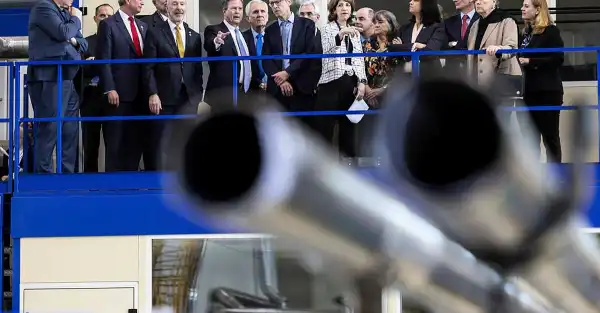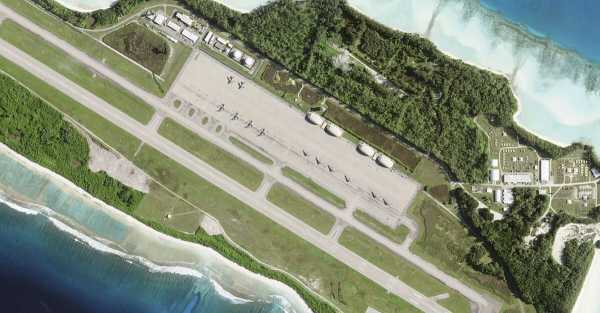
Scientists working on the world's largest atom smasher have published a design for a much larger successor that could help solve some of the remaining mysteries of physics.
Plans for a future circular collider, a nearly 57-mile loop along the French-Swiss border and even below Lake Geneva, released Monday evening, complete the details of a project that has been in the works for about a decade at CERN, the European Organization for Nuclear Research.
The study outlines characteristics such as the proposed route, environmental impact, scientific ambitions and project cost.
Independent experts will review the situation before CERN's two dozen member states (all European except Israel) decide in 2028 whether to go ahead. That would cost around 14 billion Swiss francs (around £12.5 billion) from the mid-2040s.
CERN officials promise scientific discoveries that could spur innovation in areas such as cryogenics, superconducting magnets and vacuum technology that could benefit humanity.
Outside experts have pointed to the prospect of gaining more information about the Higgs boson, the elusive particle that helped explain how matter formed after the Big Bang.
“This set of reports represents an important milestone in the process, but a full picture of the likelihood of its realization will only come from careful research by scientists, engineers, and others, including policymakers, who must make difficult decisions at a time when uncertainty reigns,” Dave Toback, a professor of physics and astronomy at Texas A&M University, wrote in an email.
The new collider “opens up exciting possibilities for the particle physics community and indeed for all of physics on the world stage,” said Professor Toback, who was not involved with the research and worked for many years at the Tevatron collider at Fermilab in the US, which closed in 2011.
For nearly a decade, CERN's leading minds have been developing plans for a successor to the Large Hadron Collider – a network of magnets that would accelerate particles through a 17-mile underground tunnel and smash them together at speeds approaching the speed of light.
Work at a particle collider confirmed in 2013 the existence of the Higgs boson, a central piece of the puzzle known as the standard model, which helps explain some of the fundamental forces in the universe.
The CERN scientists, engineers and partners behind the study considered at least 100 different scenarios for the new collider before coming up with the proposed circle at an average depth of 200 metres.
According to CERN, the tunnel will be about five meters in diameter.
“Ultimately, we would like to build a collider that will produce 10 times more energy than we have today,” said Arnaud Marsollier, a spokesman for CERN.
“When you have more energy, you can create heavier particles.”
A larger collider will also provide greater precision, which will help to study more deeply the features of the Higgs boson, “which we currently only have a vague idea of,” he added.
Sourse: breakingnews.ie



